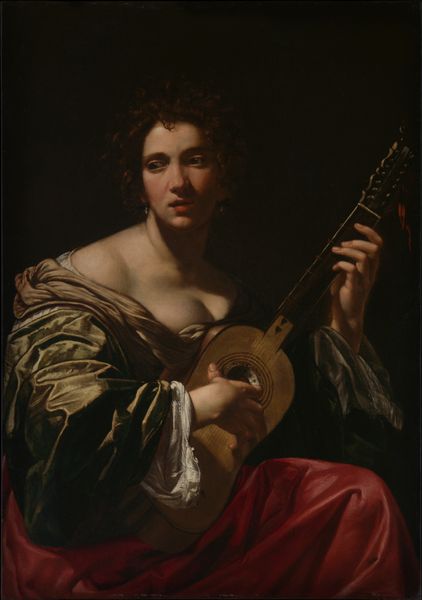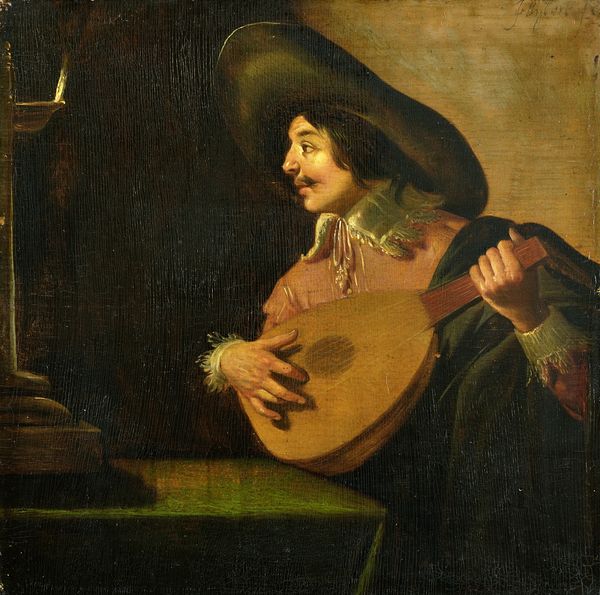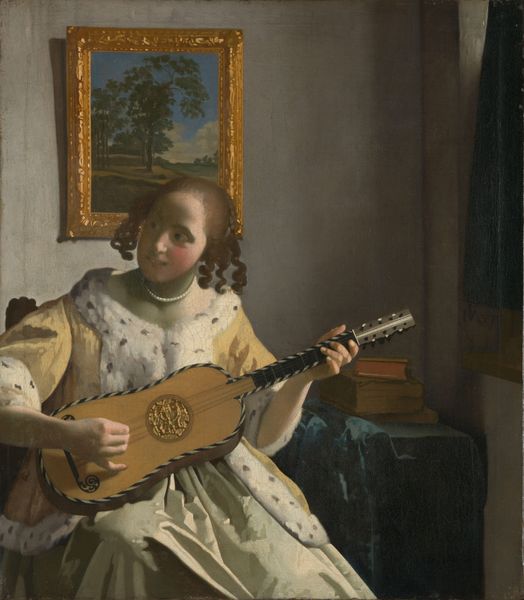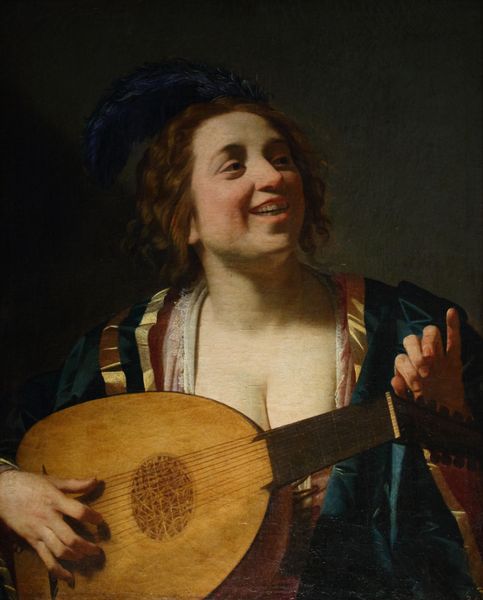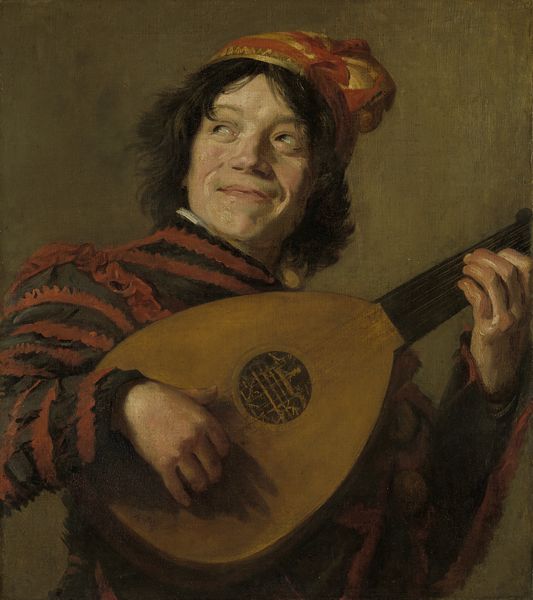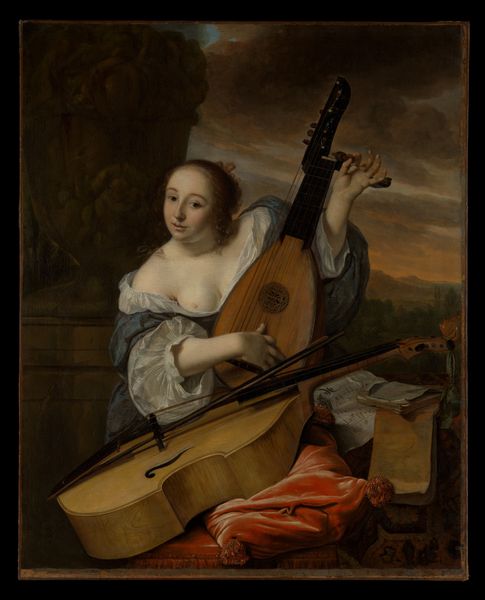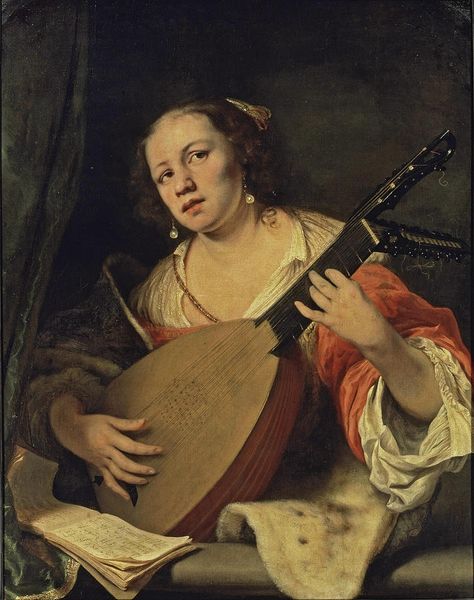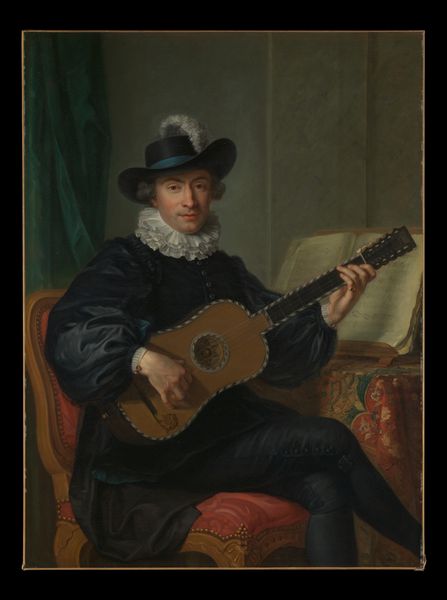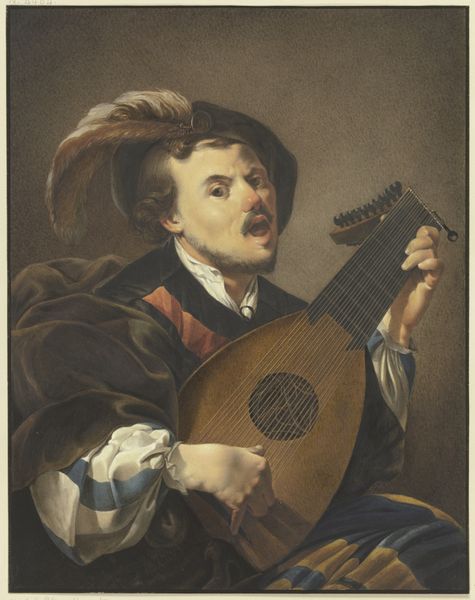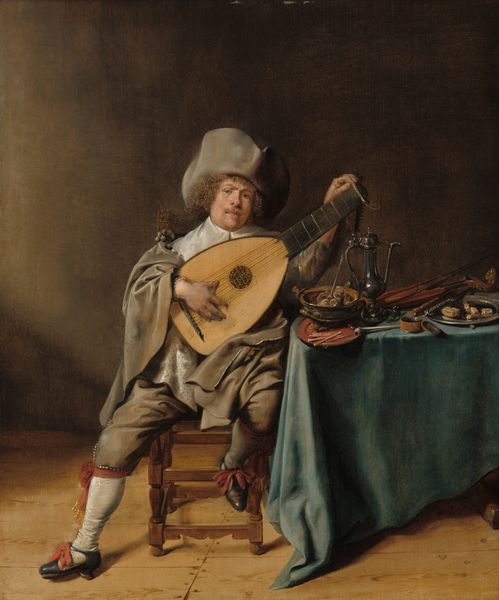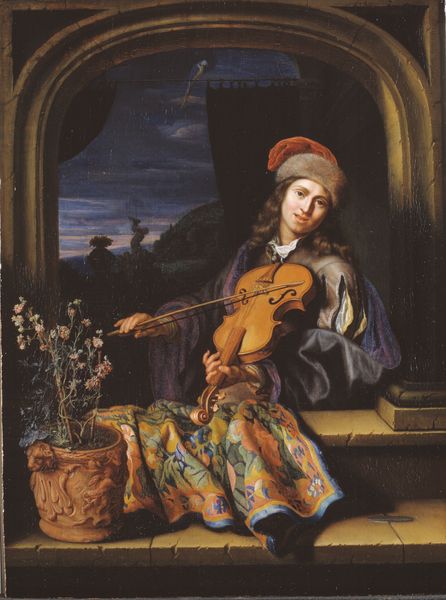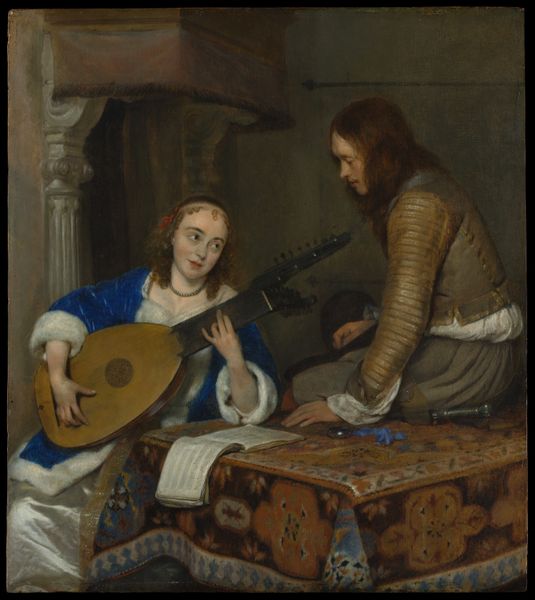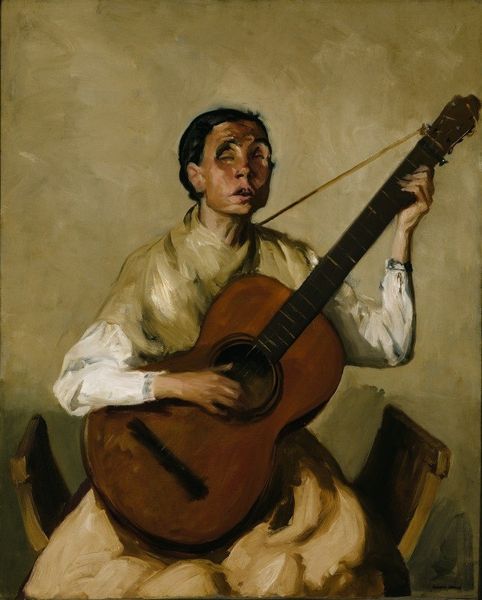
oil-paint
#
portrait
#
baroque
#
oil-paint
#
figuration
#
genre-painting
Dimensions: 50 1/2 x 39 in. (128.3 x 99.1 cm)
Copyright: Public Domain
Curator: Here we have Valentin de Boulogne's "Lute Player," an oil on canvas, created around 1625 to 1626. It's quite striking, isn't it? Editor: Yes, the play of light immediately catches my eye. The artist's strategic use of chiaroscuro is captivating, giving it a moody, theatrical quality. Curator: Indeed, Boulogne, deeply influenced by Caravaggio, understood how to use light dramatically. What do you make of the sitter's apparel and the overall context? The subject doesn't strike me as nobility, based on their attire, which looks almost staged. Editor: Precisely. Look at the contrast in textures--the smooth, almost luminous quality of the skin against the rougher weave of the fabrics, like the tunic and the leather lute. This heightens the tactile quality of the composition. How would we read this staging within genre painting and portraiture conventions? Curator: Well, one interpretation could see the "Lute Player" embodying a shift from the traditional noble patron portraits to the rising merchant classes portraying themselves with luxury items, such as the books beside him, implying that the sitter possesses wealth, taste and education. It’s a performance of class, of sophistication. And what about the lute itself? Do you notice the incredible detail rendered there? What materials are used and the social status the musician may hold as the result? Editor: The lute draws my eye through the network of dark lines against its warm hue and light hitting against the figure's face, giving dynamism to the scene, which directs to our eyes into the face's expression, adding to this sense of internal mood of passion of one deep in song. This brings out its role as more than simply an object to create melody, its position in terms of visual poetics also contributes towards setting up symbolic, emotional and sensory qualities that create dramatic, yet intimate character and staging. Curator: And indeed, we might consider the consumption aspect— the patron desiring such scenes of everyday pleasures as a projection of personal fulfillment. What the painting shows us can only indicate larger market economy changes. Editor: An economy that created art to capture fleeting sensory, auditory experiences within an arrangement of materials— textures of fabric, stringed instruments, illuminated skin— it leaves us in a realm of captivating, even mysterious sensations. Curator: Absolutely. Viewing it from both angles reveals much more than either alone. Editor: Agreed. It invites us to not only contemplate the sitter, but also, the larger landscape of labor, materials and economics within its existence.
Comments
No comments
Be the first to comment and join the conversation on the ultimate creative platform.
